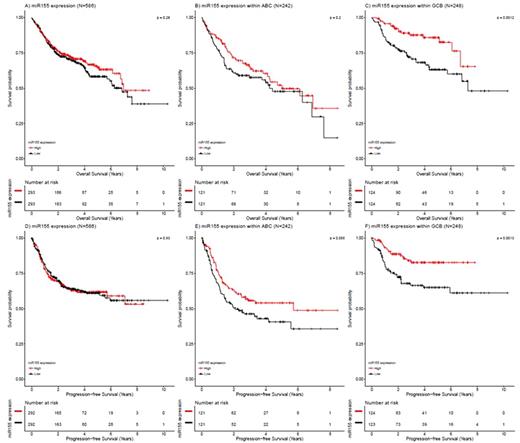Abstract

R-CHOP is standard treatment for previously untreated diffuse large B-cell lymphoma (DLBCL). Approximately 35-40% of patients relapse following R-CHOP due to drug-specific molecular resistance, and outcome with salvage therapy remain poor. Several clinical trials have tried to improve the R-CHOP regimen by dose adjustments and add on drugs, but with limited clinical benefit, emphasizing that improved understanding of R-CHOP resistance are still relevant and highly needed. Vincristine is essential to the efficacy of R-CHOP, and despite its use for decades, little is known about determinants of resistance in the treatment of DLBCL, which is important when attempting to improve outcome.
We hypothesized that miRNAs are involved in the underlying molecular mechanisms by which Vincristine resistance work and that miRNAs hold potential as biomarkers of Vincristine response. By analyses of miRNA microarrays from DLBCL cell lines with different Vincristine sensitivity, we identified lower miR-155 expression in resistant cell lines.The hypothesis was further studied by two different approaches; first, by experimental manipulations of miR-155 expression by lentiviral vectors in DLBCL cell lines, studying the direct impact of miR-155 in Vincristine response, and secondly, by clinical outcome analysis of the prognostic impact of miR-155 expression in two independent DLBCL cohorts.
Our results document that miR-155 is directly involved in Vincristine response in DLBCL cells since over-expression of miR-155 increased the Vincristine sensitivity, especially in GCB classified cell lines. Consistently, when miR-155 was downregulated or knocked-out by the CRISPR-Cas9 technology the cells became more resistant.
Prognostic impact of miR-155 was evaluated in an in-house cohort of 69 R-CHOP treated patients having miR-155 expression determined by RT-qPCR and in an independent DLBCL meta cohort of 586 patients, who had the miR-155 precursor MIR155HG measured by microarray. Survival analysis was performed overall and according to ABC/GCB subclasses. miR-155 expression did not correlate with clinical outcome after R-CHOP treatment in the entire DLBCL cohort or restricted to ABC classified patients. However, we observed that GCB classified patients with low miR-155 levels had significantly shorter overall and progression-free survival than GCB patients with high miR-155 expression levels (Figure 1). Multivariate Cox regression showed that miR-155 expression added significant and independent prognostic information to the already well-established international prognostic index (IPI) when the analysis was restricted to the GCB subclass.
In summary, experimentally we confirmed a direct link between miR-155 and Vincristine response in DLBCL overall and in particular GCB DLBCL. This association is supported by prognostic evaluation in two clinical cohorts treated with R-CHOP, that documents an inferior clinical outcome in GCB classified patients with low miR-155 expression. This suggests that the role of miR-155 in Vincristine response is important enough to affect overall- and progression-free survival especially within the GCB subclass.
No relevant conflicts of interest to declare.
Author notes
Asterisk with author names denotes non-ASH members.

This icon denotes a clinically relevant abstract


This feature is available to Subscribers Only
Sign In or Create an Account Close Modal